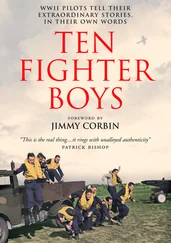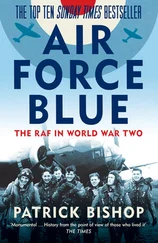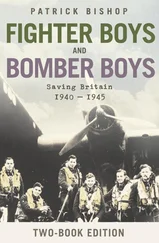1 ...8 9 10 12 13 14 ...24 The RAF thought hard about the sort of boy it was looking for. In 1919 a committee chaired by Lord Hugh Cecil, the staff officer who had waved Cecil Lewis into the RFC on the basis of his fives prowess, was set up to try and define the educational and human qualities needed for the officer corps. The architects of the new service accepted, in theory at least, that it should be open to all talents. It had been clear since the end of the previous century that social exclusivity was ultimately incompatible with the technological competence modern warfare required. The first senior military figure to understand this was Admiral Fisher, who insisted all his officers had a degree of technical understanding, a move that challenged the class structure of the Navy. 8
The Cecil Committee decided that all officers must be able to fly, though the qualification was not so rigid as to exclude good technicians who were poor aviators. It wanted boys who exhibited ‘the quality of a gentleman’. It was careful, though, to emphasize that by this they meant ‘not a particular degree of wealth or a particular social position but a certain character’. 9Even so, the new cadet college must have seemed to any ambitious lower-class boy and his parents as cold and daunting as the old ones. Air Ministry officials set out to recruit people like themselves. They wrote to public-school headmasters, advertising the benefits of a service career and claiming that flying training was not the hair-raising activity it had been in the war years (though this was far from the truth and accidents at the college were frequent). 10An Old Etonian officer was dispatched to the Alma Mater to act as a liaison officer.
Unlike the public schools, few state schools had the resources to provide coaching for the entrance exam. Fees were prohibitive. Parents were expected to pay up to £75 a year plus £35 before entry and £30 at the start of the second year towards uniform and books; this at a time when a bank manager earned £500 a year. Despite the Cecil Committee’s wish that selection should be ‘free of the suspicion of partiality in favour of either individuals or classes’, most cadets in the interwar years were public schoolboys.
The curriculum at the beginning was a mix of academic and practical subjects interspersed with drill and PT. In the first year there was little flying, though much time was spent in the workshops and hangars. Cadets lived five to a hut until their fourth, senior, term, when they got their own cubicles. They received £2 15s. (£2.75) a week and each day was packed with activities from reveille at 6.45 a.m. to dinner in the mess. Sports were a fetish, particularly rugby, which Trenchard considered ‘the best game for making an officer and a gentleman out of any material’. 11Keenness on boxing was admired. The life was clean, spartan, boisterous. Women were nowhere to be seen, except at the end-of-course dance, and the limited delights of Sleaford, the local town, were out of bounds. Cadets were allowed motorcycles but not cars and the lanes round about buzzed with souped-up Broughs and Rudges.
Fun was bruising. First-termers were forced to sing a song for the other cadets. Failure to perform well earned a punishment called ‘creeping to Jesus’. The victim was stripped almost naked, blindfolded and forced to sniff his way along a pepper trail that ended at an open window, where he was tipped outside and drenched in cold water. 12The first commandant, Air Commodore C. A. H. Longcroft, was a hunting man and cadets were encouraged to ride to hounds, though a shortage of mounts meant beagling was more practical. The college had its own pack.
Intellectual activity was limited. There was encouragement from an early teacher, S. P. B. Mais, who left Tonbridge School to become Professor of English at Cranwell. He felt cadets should be treated as undergraduates and founded a play-reading circle and a debating society. The response was initially hesitant. The cadets had gone to Cranwell to fly. Yet at the outset, at the end of their two-year courses, this was something they were still not fully qualified to do. A shortage of aircraft and the demands of the curriculum meant graduates left without their wings, or even a high standard of airmanship. One cadet spent less than nine hours in an aeroplane in his first year, and then only as a passenger. The Avro trainers were equipped with a compass and a bubble indicator like a spirit level to show whether they were flying straight. Navigation was primitive and many flights consisted of simple hops to neighbouring airfields. Cranwell cadets were awarded their wings after leaving once they had satisfied their first squadron commanders that they could indeed fly.
But Cranwell succeeded from the start in generating an air force spirit. The cadets knew what was wanted. Aerial warfare, they understood, had created the need for a hybrid warrior who combined mastery of the latest technology with the mental bearing of a classical champion. It was a new military caste and Cranwell was its spiritual home.
The same aspiration to excellence was encouraged at Halton. Five thousand applicants responded when the scheme was announced. They were mostly boys from the lower middle and upper working classes who saw the RAF as a means of advancement and a gateway to the intoxicating world of aviation. The entrance exam tested applicants on mathematics, experimental science and English. To pass, boys were essentially expected to be up to school certificate level, a tough examination taken at sixteen that qualified the successful candidate for higher education. It was also the entry requirement for Cranwell. Many of those who sat for entrance to Halton and its sister technical schools therefore, had parents who were sufficiently comfortably off to keep them on past the normal school-leaving age of fourteen. Or sufficiently self-sacrificing. In January 1921 a photographer was present as 300 new recruits set off from a London terminus to begin their course. The boys are cheering. Many wear shabby suits and flat prole hats that make them seem miniature versions of their fathers. The caption notes that ‘the variety of class of boys was very striking, many of them having quite an imposing kit, whilst not the least pleased with the whole proceedings were those whose belongings were kept within bounds in brown paper parcels’. 13
The high standard at entry meant that many of the mechanics servicing the aeroplanes would be educationally equal, and superior in mechanical skill, to the men flying them. 14RAF other ranks showed less deference to their officers than was customary in the army, where most privates and NCOs came from the uneducated working class. In the RAF, the path from the Naafi to the officers’ mess was wider and more frequently trodden than in any of the other services, and many a rigger and fitter ended up a pilot. The system was constructed to allow, if not exactly encourage, the process. The best three apprentices each year were offered a cadetship at Cranwell, with the expectation, frequently fulfilled, that this would lead to the highest reaches of the service. A new class of airman pilots was announced in late 1921 that offered flying training to outstanding candidates from the ranks. They served for five years before returning to their own trade, but kept their sergeant’s stripes gained by being in the air. The policy meant that by the time the war started about a quarter of the pilots in RAF squadrons were NCOs – a tough, skilful difficult-to-impress élite within an élite. 15
There were 300 places in the first intake. The regime followed the same hardworking lines as at the cadet college, with classes and workshop sessions from Monday to Friday and Wednesday afternoons off for games. Discipline was milder than in the army or navy, but firm none the less. Only over-eighteens were allowed to smoke, and then when off-base. Trenchard was as proud of Halton as he was of Cranwell. He was aware that by engineering a new class of educated other ranks, the first in British military history, he was doing something radical, almost revolutionary.
Читать дальше












